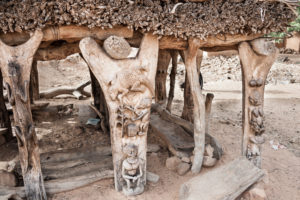
The prevailing view that pyramids were primarily tombs is cast into doubt by the absence of mummies within these structures. Mummies have instead been found in the Valley of the Kings, not within the pyramids. The remarkable precision in cutting and stacking 20-ton granite blocks in the King’s Chamber, possibly utilising wooden ramps, brings to light significant queries. The hypothesis of using wooden ramps implies a substantial consumption of timber, hinting at the possible deforestation of large areas. However, there is a noticeable lack of evidence supporting such extensive use of wood.
Furthermore, the absence of ancient texts or hieroglyphs explicitly mentioning the construction of the pyramids by Egyptians adds to the mystery. The construction involved an estimated 2.3 million large stone blocks, leading to widespread speculation about the size of the workforce and the techniques they employed. These methods achieved a precision that seems to match or surpass modern standards, which is particularly intriguing.
The pyramids’ alignment with the true north, with a minimal deviation at the pyramid’s peak from the centre, suggests an extraordinary level of architectural precision. This accuracy, achieved without the presumed use of wheel technology, challenges our understanding of ancient engineering capabilities. The existence of monumental structures, similar in scale and complexity, across different parts of the world, including underwater near Japan, points to a shared understanding of construction techniques and geometry. This global commonality raises fascinating questions about the possible interconnectedness of ancient civilisations and their architectural expertise, offering a fresh perspective on historical architectural achievements.
This fresh perspective encourages a reevaluation of the historical narrative surrounding pyramid construction. The intricacies involved in such architectural feats underscore a potentially sophisticated understanding of mathematics, astronomy, and physics, far beyond what is commonly attributed to ancient civilisations. These ancient structures’ meticulous orientation and precision suggest knowledge and skill that challenge the conventional view of technological progress.
The lack of direct evidence, such as inscriptions or records explicitly detailing the construction process, does not diminish the significance of these achievements. Instead, it invites a broader consideration of the methods and tools available during that era. The speculation surrounding the use of simple tools and techniques to achieve such precision in construction points to a potentially underestimated capability of ancient builders.
The debate over the purpose of the pyramids, combined with the mysteries of their construction, opens up wider discussions about the cultural and technological interconnectedness of ancient civilisations. The similarities in monumental architecture across different cultures and continents suggest a shared geometrical understanding or perhaps even cross-cultural exchanges that have yet to be fully understood.
In reflecting on these ancient marvels, it becomes evident that the pyramids and similar structures are not just relics of the past but are also beacons that highlight the ingenuity and resourcefulness of humanity. They remind us that the history of technological and architectural development is far more complex and interconnected than often realised, inviting a deeper appreciation and understanding of ancient civilisations and their contributions to human knowledge and progress.





